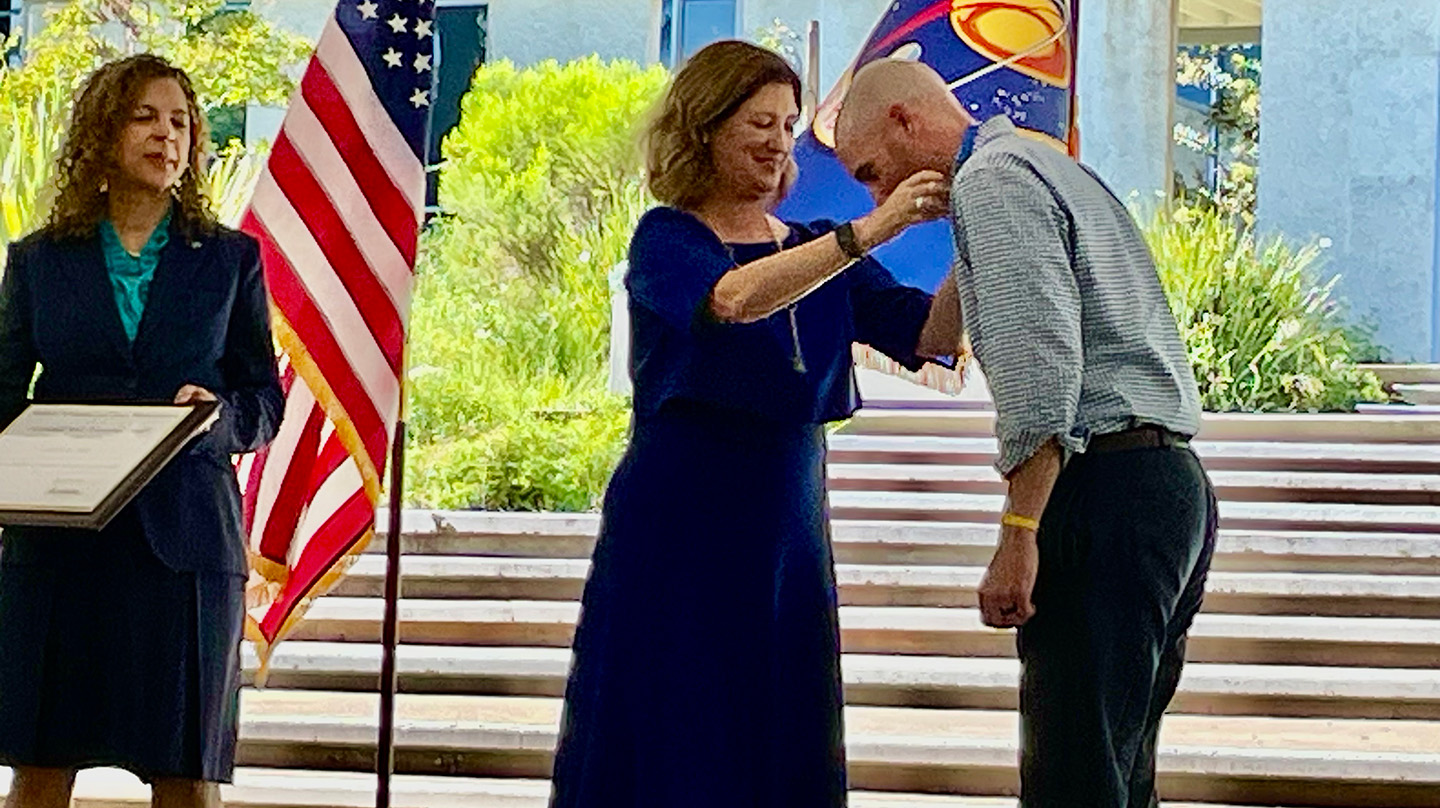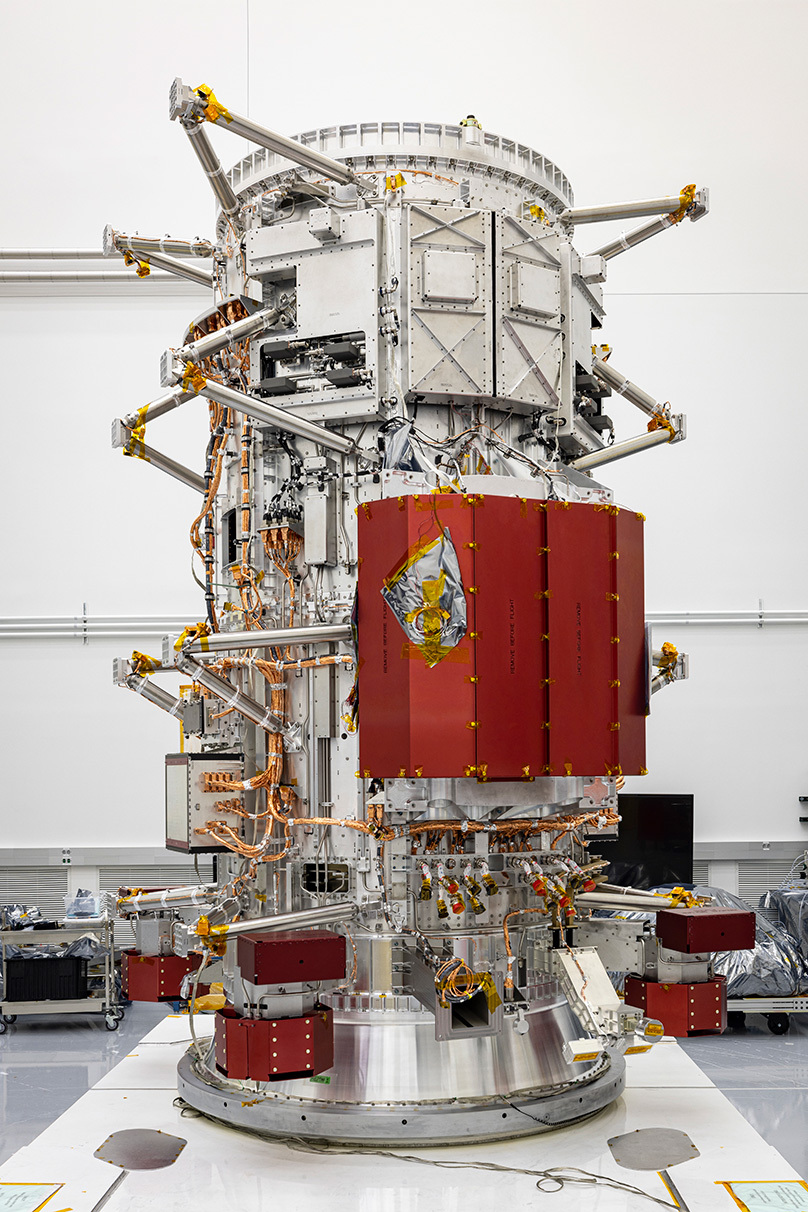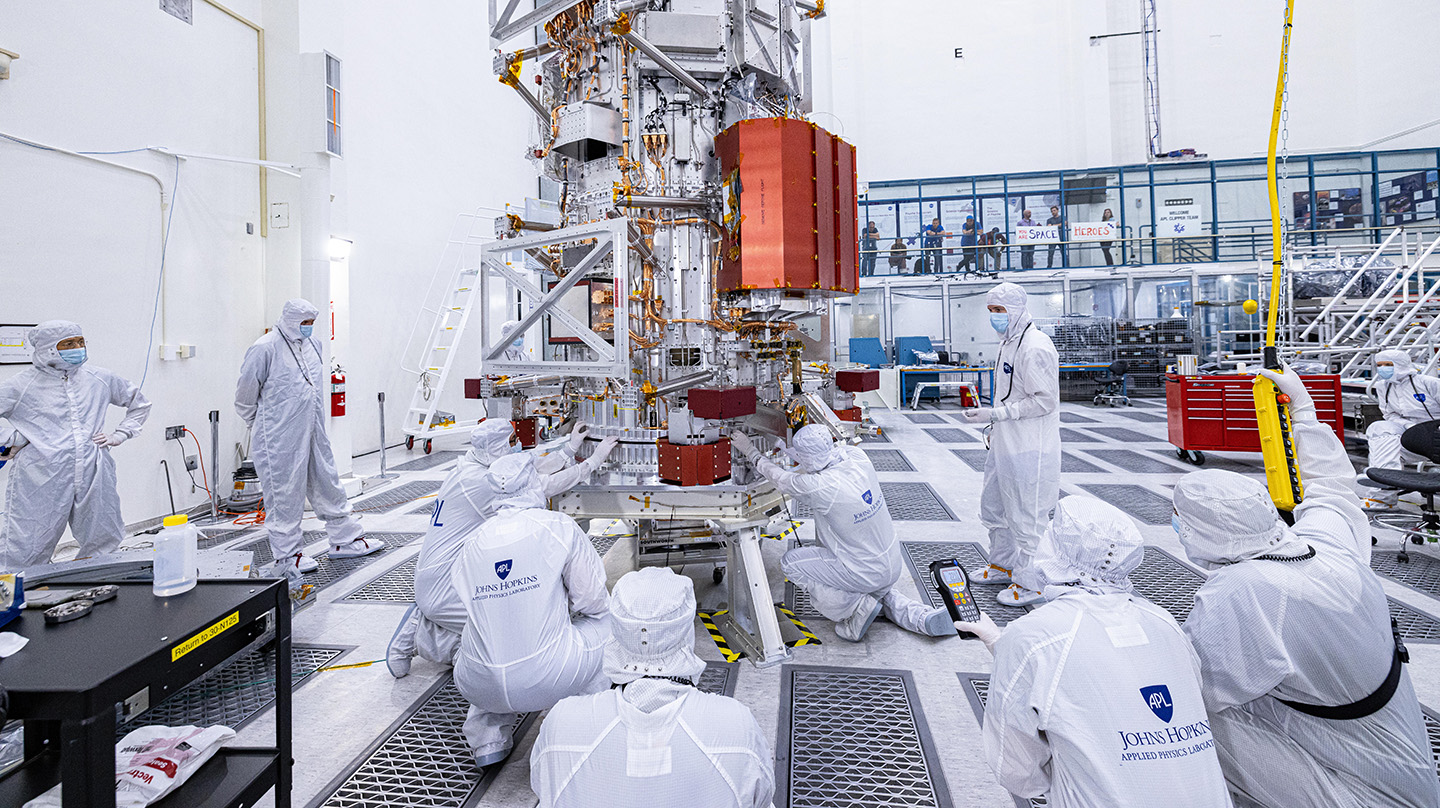Press Release
Johns Hopkins APL Team Earns NASA Awards for Europa Clipper Work

Credit: Stuart Hill
Johns Hopkins Applied Physics Laboratory (APL) team members on NASA’s Europa Clipper mission recently picked up two NASA awards honoring their accomplishments building and delivering the spacecraft’s propulsion module.
The agency presented the Europa Clipper Module team with the Group Achievement Award for their innovative approach and ability to tackle unexpected challenges to push the mission forward. The Clipper Module team spans APL, NASA’s Goddard Space Flight Center (GSFC), Jet Propulsion Laboratory (JPL), Marshall Space Flight Center and Langley Research Center (LaRC).
Europa Clipper is the largest spacecraft ever developed for a NASA planetary mission. Set to launch in October 2024, it will arrive at Jupiter in 2030 and perform nearly 50 flybys of the planet’s moon Europa, which is believed to hold a liquid water ocean beneath its icy surface. The mission aims to find out whether Europa could harbor conditions suitable for life.
Considered the spacecraft’s “backbone,” the propulsion module hosts Europa Clipper’s propulsion subsystem, which will be used to slow the spacecraft into orbit around Jupiter. It also carries electronics to command and monitor the propulsion module, as well as the radio frequency module, which serves as the spacecraft’s telecommunications hub.

Credit: Johns Hopkins APL/Ed Whitman
NASA awarded APL’s Stuart Hill, product delivery manager for the propulsion module, an Exceptional Public Achievement Medal in recognition of his guidance leading the multi-organizational team in the development and delivery of the spacecraft’s propulsion module.
The propulsion module was designed by APL and built in collaboration with JPL in Pasadena, California, and Goddard in Greenbelt, Maryland. The propulsion module and RF module were completed and shipped on June 1, 2022, from Joint Base Andrews in Maryland to JPL. The milestone delivery followed 12 years of design iterations and construction, multiple trips across the country and thousands of hours of labor.
As the lead on the design and delivery of the module, Hill managed operations across multiple organizations on separate coasts, maintaining an inclusive team culture that helped spur innovation and collaboration. The multi-organizational team behind the mission overcame many technical challenges during the design, development and building of the flight hardware, particularly during the fabrication and installation of the flight harness.
Instead of taking the conventional route, which would have required the team to build a costly, but accurate, flight module mechanical simulator, under Hill’s guidance, the team built a simpler physical mock-up of the modules and used augmented reality to superimpose computer-assisted design models of the module component and harness onto the structure. This effectively allowed the harness fabricators at APL to accurately engineer and route the harness alongside their JPL colleagues on the West Coast. The innovative approach saved time and travel between coasts and is being used in current flight efforts at APL.
“I am very grateful to be recognized for my efforts in the part I played on the Propulsion Module team,” said Hill, who works in APL’s Space Exploration Sector. “It was an absolute privilege to have such an opportunity to lead the talented group of individuals who are directly responsible for our accomplishments on the Europa Clipper program.”
Europa Clipper is a partnership between APL and JPL. APL contributions include the spacecraft’s radio frequency and telecommunications module; propulsion module; radiation monitor; plasma detection instrument, called the Plasma Instrument for Magnetic Sounding (PIMS); main camera, called the Europa Imaging System (EIS); and components of the Mapping Imaging Spectrometer for Europa (MISE).
